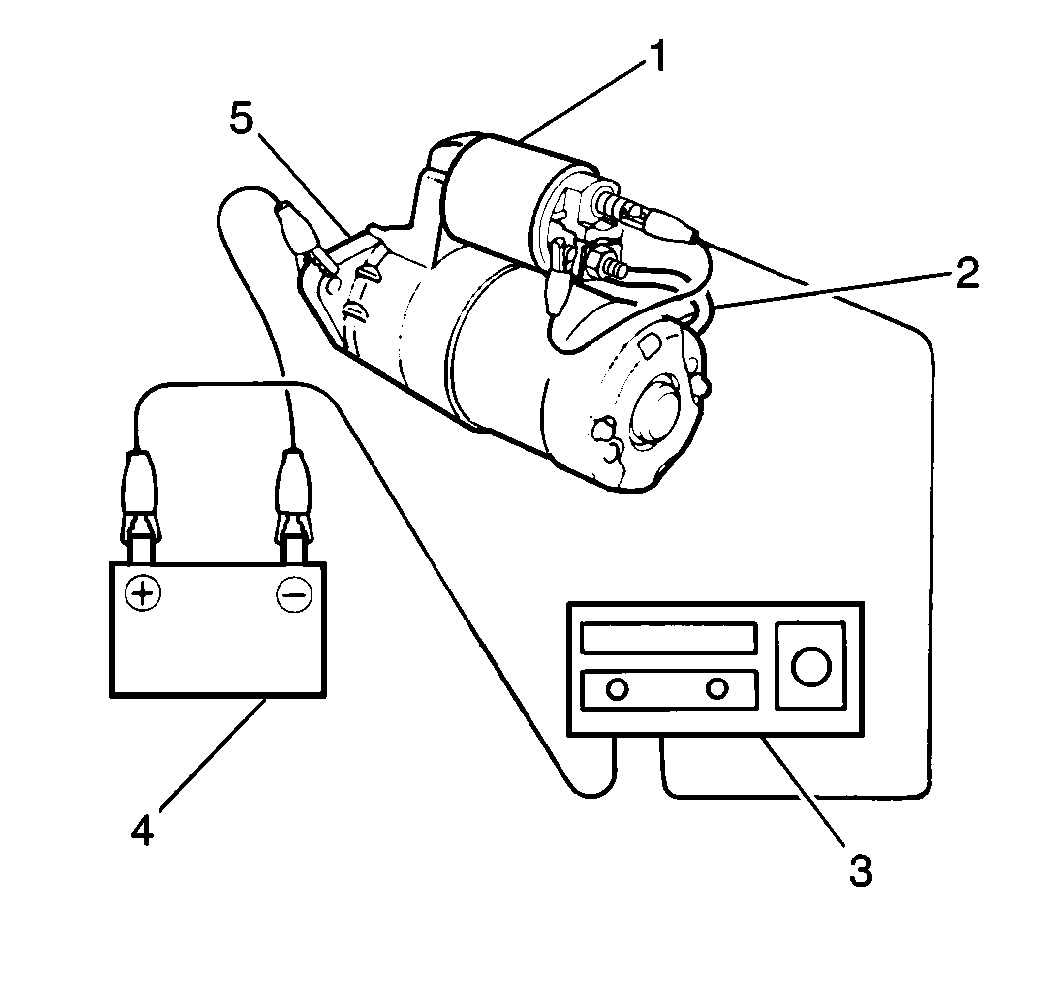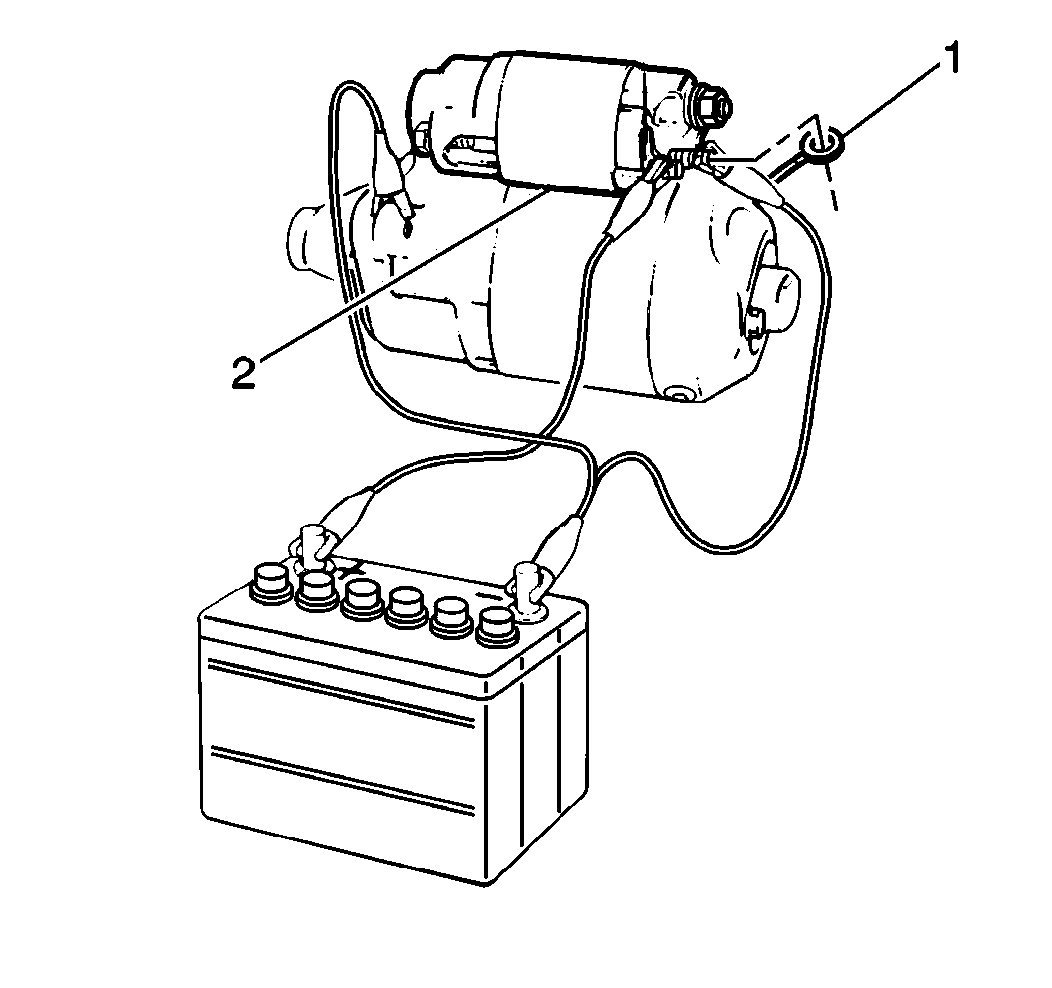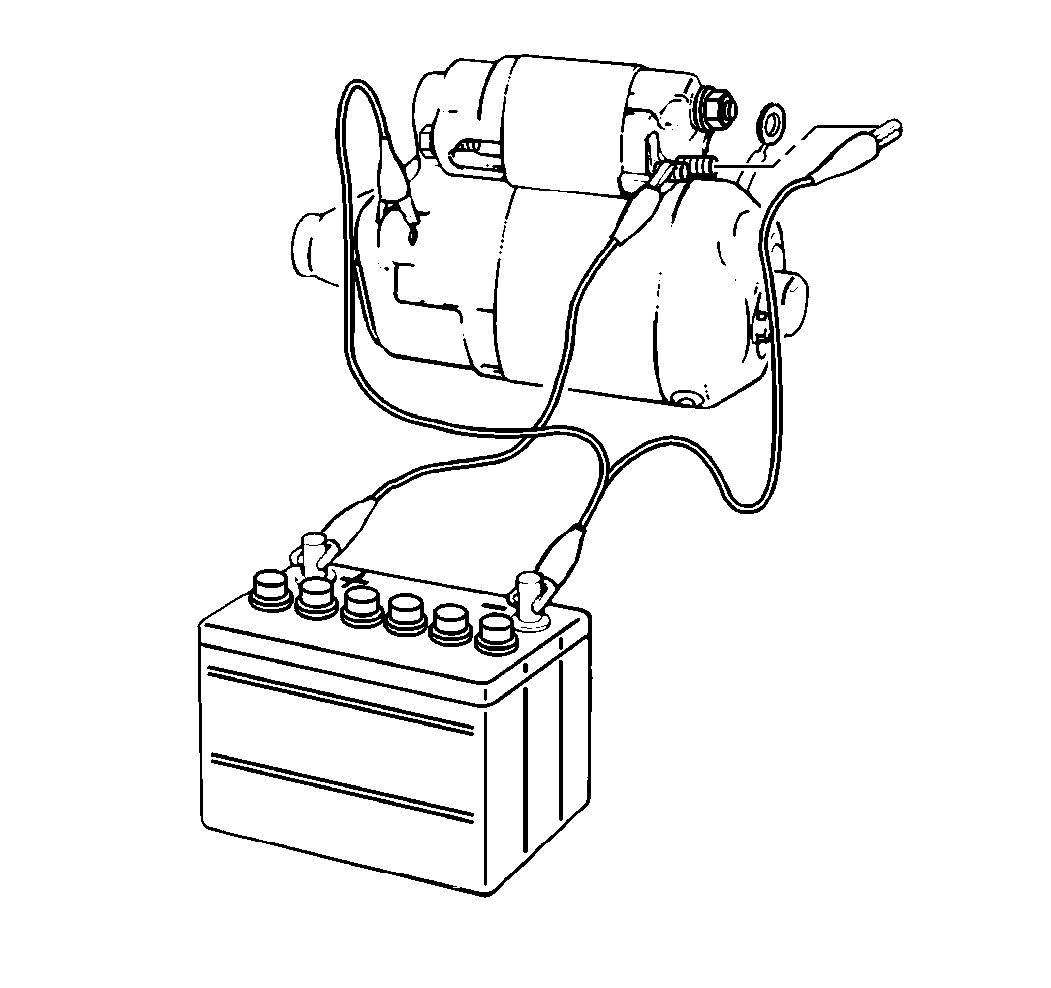Caution: Unless directed otherwise, the ignition and start switch must be in the OFF or LOCK position, and all electrical loads must be OFF before servicing
any electrical component. Disconnect the negative battery cable to prevent an electrical spark should a tool or equipment come in contact with an exposed electrical terminal. Failure to follow these precautions may result in personal injury and/or damage to
the vehicle or its components.
- Disconnect
the negative battery cable from the battery.
- Remove the starter motor from the vehicle. Refer to
Starter Motor Replacement
.

Caution: Keep fingers and tools away from the opening in the starter
drive housing while performing the Starter No Load Test. The strong shifting
action of the solenoid could cause personal injury or damage as the drive
pinion moves into the cranking position and spins.
- Connect the test leads from the battery (4) and the ammeter (3) to the
starter motor assembly.
- Ensure that the following conditions are met:
| • | The starter motor runs smoothly. |
| • | The pinion extends quickly and completely. |
- Measure the starter motor current draw. The standard starter motor
current draw at 11 volts is 90 Amps.
Evaluation
Low free speed and high current draw indicates the following conditions:
| | The following conditions may cause too much friction: |
| - | A bend in the armature that allows the armature to drag. |
| | Inspect the shorted armature on a growler after disassembly. |
| • | Grounded armature or fields |
| | Inspect further after disassembly. |
Failure to operate and high current draw indicates the following conditions:
| • | A direct ground in the terminal or fields |
Failure to operate and low or no current draw indicates the following
conditions:
| | Inspect the field circuit by inspecting the internal connections after
disassembly. |
| | Inspect the commutator for badly burned bars after disassembly. |
| • | High insulation between the commutator bars |
| • | Other conditions that may prevent good contact between the brushes
and the commutator |
Low no-load speed and low current draw indicates the following conditions:
| • | High internal resistance due to poor connections |
| | Inspect the condition of the internal components after disassembly in
order to find an open field circuit. |
| | Inspect the commutator for badly burned bars after disassembly. |
| • | High insulation between the commutator bars or other conditions
which may prevent contact between the brushes and the commutator |
High free speed and high current draw indicate shorted fields.
| • | If shorted fields are suspected, replace the field coil assembly. |
| • | Use a growler in order to inspect for shorted armature. |
Rated current draw and no-load speed indicate the normal condition of
the starter motor assembly.
If any of the above conditions are unsatisfactory, repair or replace
the starter motor. Refer to
Starter Motor Replacement
or
Starter Motor Overhaul
.
Starter Motor Pull-In, Hold-In and Pinion Return Testing
Notice: Do not allow the solenoid pull-in current to flow for more
than 15 seconds at a time. The windings can be damaged by overheating. Also,
the current draw readings will decrease as the windings heat up.

- Remove the field coil
lead wire (1) from the solenoid terminal.
- Install the test leads from the battery to the starter motor assembly.
- Ensure that the pinion extends quickly and completely to the energized
position (pull-in test).

- Disconnect the negative
(-) lead from the starter-to-solenoid wire solenoid terminal.
- Verify that the pinion remains completely in the energized position
(hold-in test).

- Disconnect the negative
(-) lead from the drive housing.
- Ensure that the pinion returns quickly and completely to the de-energized
position (pinion return test).
If the pinion does not return to the de-energized position, the cause
is most likely a faulty starter solenoid return spring. Replace the starter
solenoid.
- If any of the above tests are not satisfactory, replace the starter
solenoid. Refer to
Starter Motor Overhaul
.
Notice: Use the correct fastener in the correct location. Replacement fasteners
must be the correct part number for that application. Fasteners requiring
replacement or fasteners requiring the use of thread locking compound or sealant
are identified in the service procedure. Do not use paints, lubricants, or
corrosion inhibitors on fasteners or fastener joint surfaces unless specified.
These coatings affect fastener torque and joint clamping force and may damage
the fastener. Use the correct tightening sequence and specifications when
installing fasteners in order to avoid damage to parts and systems.
- Install the field
coil lead wire to the solenoid terminal.
Tighten
Tighten the nut to 10 N·m (89 lb in).
- Install the starter motor assembly to the vehicle. Refer to
Starter Motor Replacement
.
- Connect the solenoid electrical connector.
- Connect the negative battery cable.
Tighten
Tighten the negative battery cable retainer to 15 N·m (11 lb ft).




